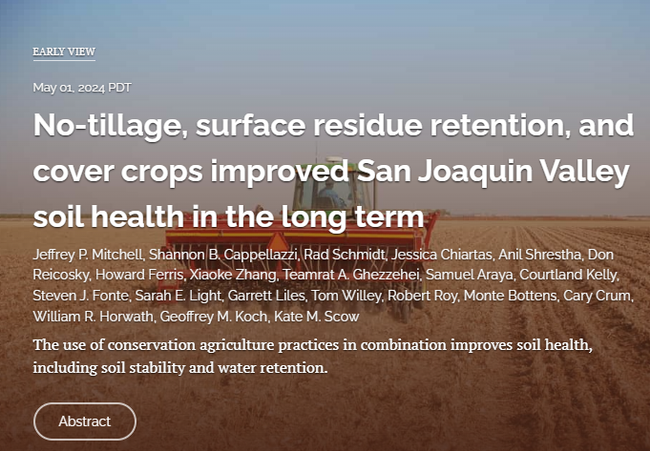In an effort to extend information on CASI's twenty-year conservation agriculture study that has been conducted at the University field station in Five Points, CA and that has been recently published in the journal, California Agriculture, Jeff Mitchell provided three radio interviews on the morning Ag Report that Don York produces for KMJ580 AM each morning out of Fresno. The segments aired on May 23rd and on June 4th and 6th, 2024 and are available below. Mitchell shared findings of the long-term “NRI Project” that since 1998 has examined four production systems – standard tillage without cover crop, standard tillage with cover crop, no-till without cover crop, and no-till with cover crop.
The NRI Project started as an effort to determine the potential of reduced disturbance tillage in terms of generating or producing less dust and in the early 2000s found that dust can be significantly reduced by as much as 80% with a variety of reduced tillage practices relative to standard tillage techniques that have been widely used in annual crop fields throughout the San Joaquin Valley since the early 1930s. The recent findings from the unique long-term study have shown that several soil health indicators including aggregation, water infiltration, biodiversity, and surface carbon were improved through the long-term use of cover crops with reduced disturbance tillage.
In the interviews, Mitchell points out that the systems that were evaluated and developed in the NRI Project were not at all easy to implement and required considerable trial-and-error effort to achieve. Yields, for instance, of cotton in the early years under the high residue, no-till cover crop system lagged behind the standard tillage, however once effective planting techniques were learned to establish the cotton crop. There were no yield differences between the two tillage systems for the next several years.
The results of this study that included 18 coauthors can be seen at https://doi.org/10.3733/001c.94714
Attached Files:
- Jeff Mitchell on KMJ Ag Report 5-23-24
- Jeff Mitchell on KMJ Ag Report 6-4-24
- Jeff Mitchell on KMJ Ag Report 6-6-24
Attached Images:
